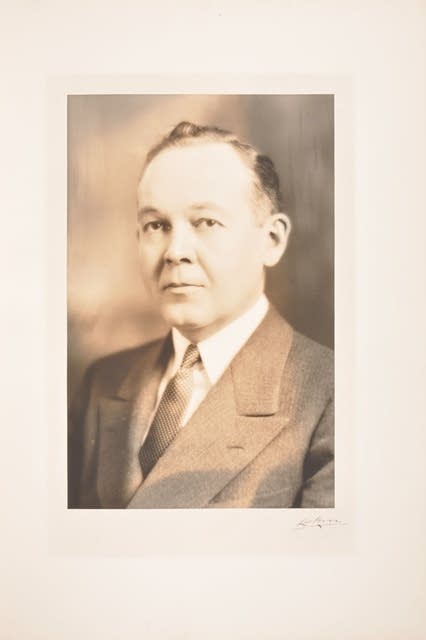Past U leaders' racist, anti-Semitic acts stir campus debate

University of Minnesota leaders will consider renaming four buildings whose current namesakes' pasts include patterns of racist and anti-Semitic actions.
After more than a year of debate, the Board of Regents will hold a special meeting Friday where it will discuss and potentially vote on renaming buildings named for Lotus Delta Coffman, Edward Nicholson, William Middlebrook and Walter Coffey.
Last fall, a task force of mostly U professors was charged with studying and making recommendations on the names of Coffman Memorial Union, Nicholson Hall, Middlebrook Hall and Coffey Hall.
Their charge came after the U's "A Campus Divided" project portrayed the buildings' namesakes as supporters of discrimination against black and Jewish students.
Create a More Connected Minnesota
MPR News is your trusted resource for the news you need. With your support, MPR News brings accessible, courageous journalism and authentic conversation to everyone - free of paywalls and barriers. Your gift makes a difference.
The report concluded that all four buildings should be renamed and include permanent exhibits installed on each man's "complicated legacy."
U President Eric Kaler backs removing the men's names from the buildings, but regents will have the final say.
While each former administrator in question made what could be considered positive contributions to the university, they also engaged in highly discriminatory behavior — from racially segregating university housing to spying on students who were Jewish or considered "radical."
Lotus Delta Coffman — Coffman Memorial Union
Coffman was the U's president from 1920 until he died in 1938. The university's student union was named for him in 1939. The report found he expanded campus and created its old General College, while "routinely" keeping exclusionary, discriminatory policies at the U.

• Coffman in 1931 wrote: "The races have never lived together, nor have they ever sought to live together."
• His administration repeatedly excluded black students from student housing. The report says Coffman was "extremely cautious about allowing even a single instance to establish 'precedent' for integrated housing."
• He considered creating an "International House" for non-white U students to live, but ultimately decided it was too expensive.
• Under Coffman, the U's nursing school would not allow black students to care for white patients.
• After Jack Trice, a black Iowa State football player, died from injuries sustained during a 1923 game against Minnesota, Coffman batted down accusations that U players had assaulted Trice. Coffman again defended the football team in 1934 after writers said Minnesota players had targeted Ozzie Simmons, another black athlete.
• Coffman authorized surveillance efforts on student activists, including those who protested racial discrimination or were believed to be Jewish or associated with communism.
Edward Nicholson — Nicholson Hall

Nicholson started as a chemistry instructor in 1895 and was dean of student affairs from 1917 to 1941, when he retired. Nicholson Hall on the Minneapolis campus' East Bank was named for him in 1945. He laid the groundwork for many student services, but also spied on students and "exhibited antisemitism and racism in his actions as a University administrator, often targeting Jewish and Black students whom he labeled 'communists,'" according to the report.
• Nicholson surveilled student activists — especially those who were Jewish or politically left — in the 1930s and reported them to his "political allies," the report says.
• Former U history professor Hyman Berman wrote that Nicholson kept a list of what he considered "Jew agitators" and shared it with the FBI, the military and political activists.
William Middlebrook — Middlebrook Hall

Middlebrook was the U's comptroller from 1925 to 1943, then a vice president until 1959. The Minneapolis campus' West Bank dorm is named for him. Credited with expanding the U's campus, Middlebrook also perpetuated racist housing policy and displaced people living in what was formerly a low-income Minneapolis neighborhood.
• While in charge of the U's finances, the report says Middlebrook "worked over several decades to exclude students of color from University housing."
• He worked to exclude black nursing student Ahwna Fiti from U housing, part of a pattern of Middlebrook using his leadership position to keep non-white students from student housing.
• Development of the West Bank campus, led by Middlebrook, was politically controversial at the time. Many residents protested the development, as it displaced working class and minority communities in favor of more expensive housing, roadways and university facilities.
Walter Coffey — Coffey Hall
Coffey was U president from 1941 to 1945, and the Department of Agriculture dean before that. Coffey Hall on the St. Paul campus was named for him in 1949. He was credited with guiding the university through World War II while also pushing discriminatory housing policy on campus.

• The report says "the Coffey administration worked to exclude Black men from campus residence halls by actively discouraging them from requesting to live in Pioneer Hall." • Coffey' s administration tried to establish segregated housing for black male students, a retreat from non-discriminatory housing policies of the past U administration.
• Despite student protests of the U's discriminatory housing policy, Coffey kept silent: "The Negro problem is an involved one and I have no statement to make on it at this time," Coffey said in a 1942 Minnesota Daily article.
• Coffey's administration closed the International House for students of color, but later reopened it as a way to discourage black students from living in other dorms, the report said.